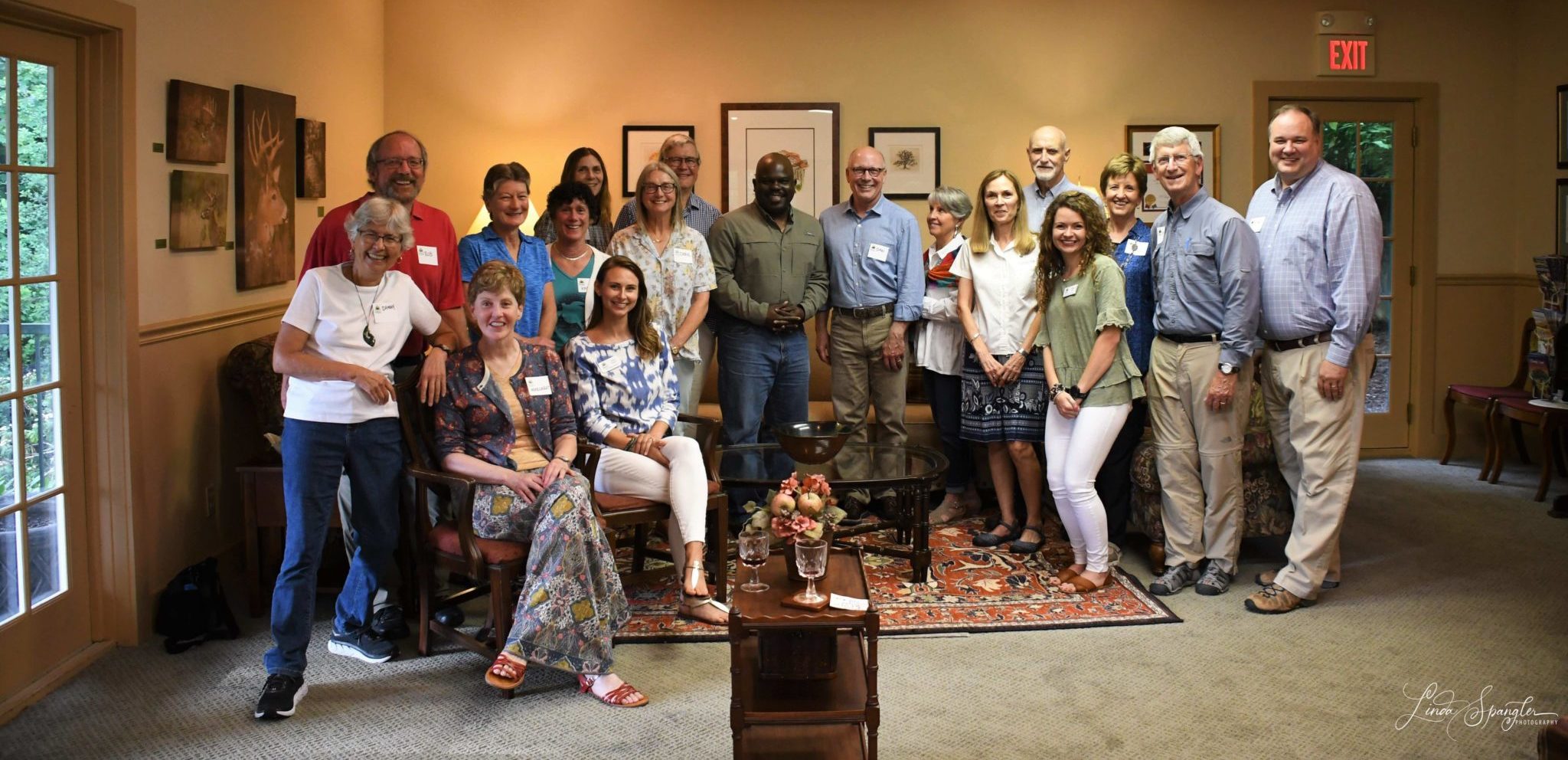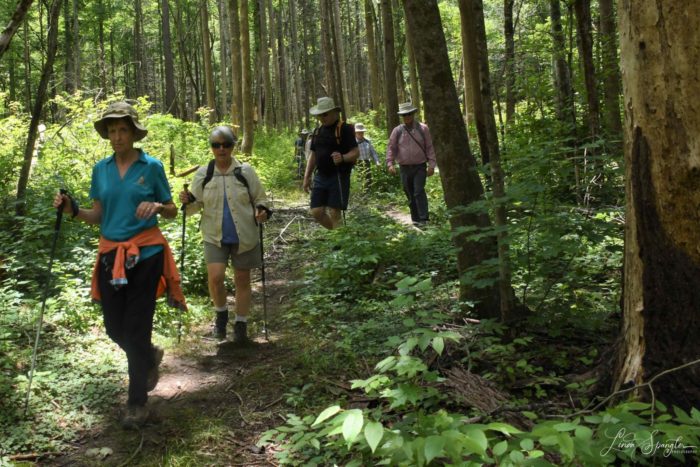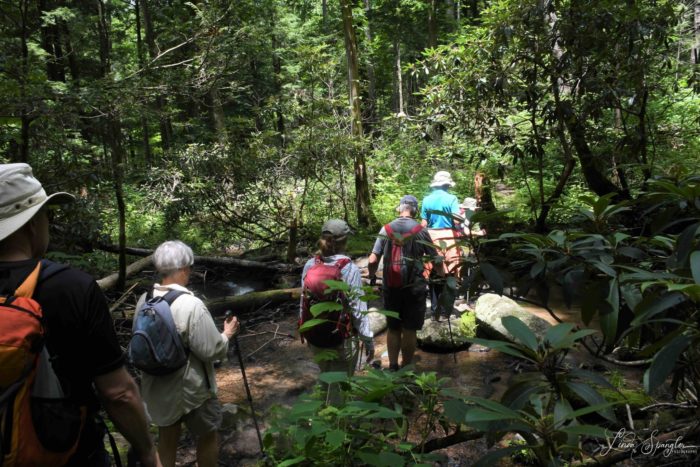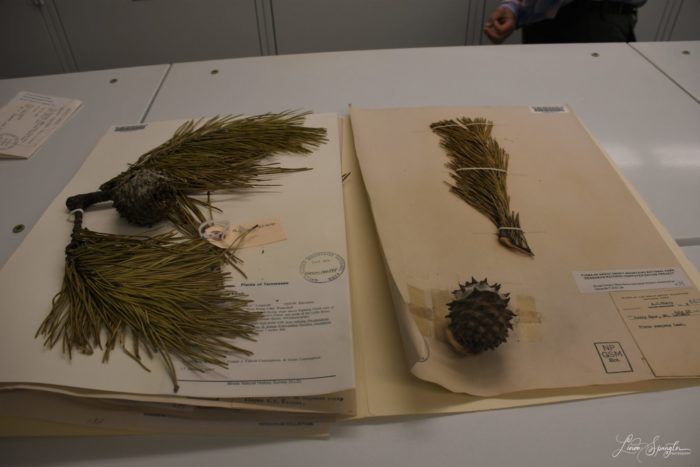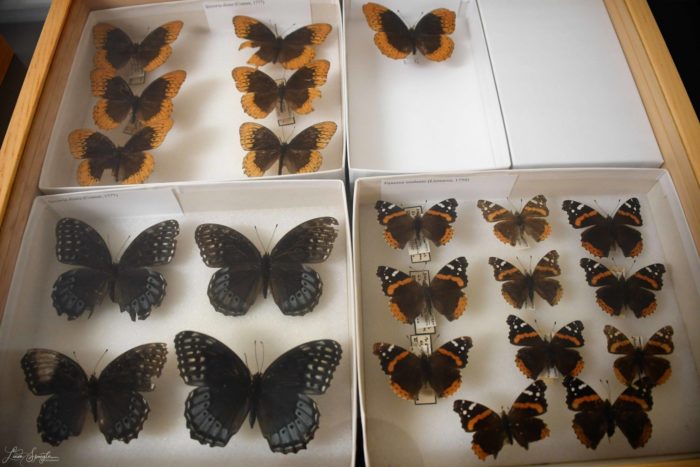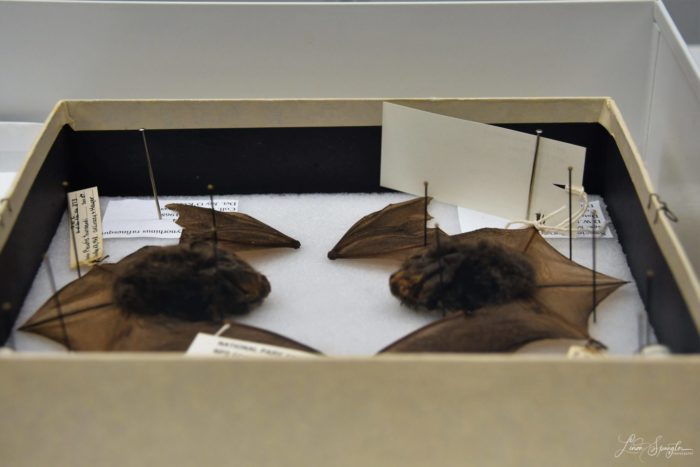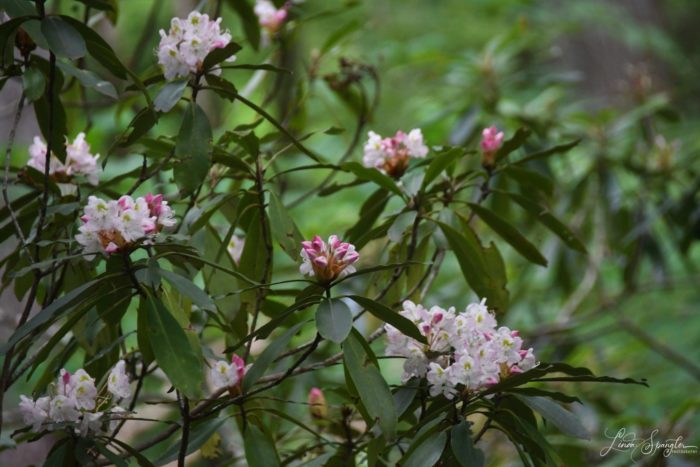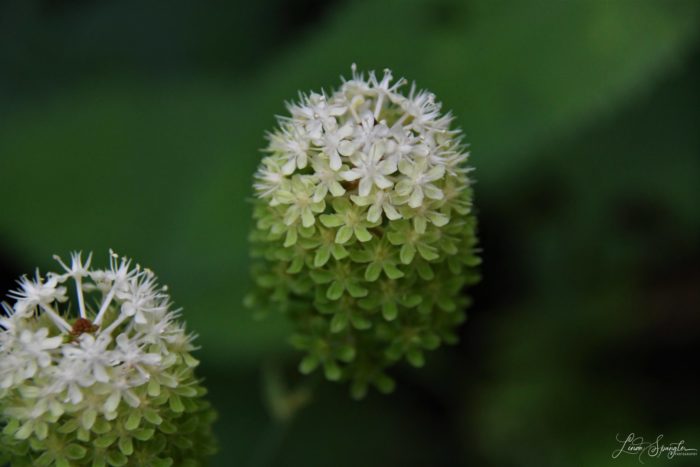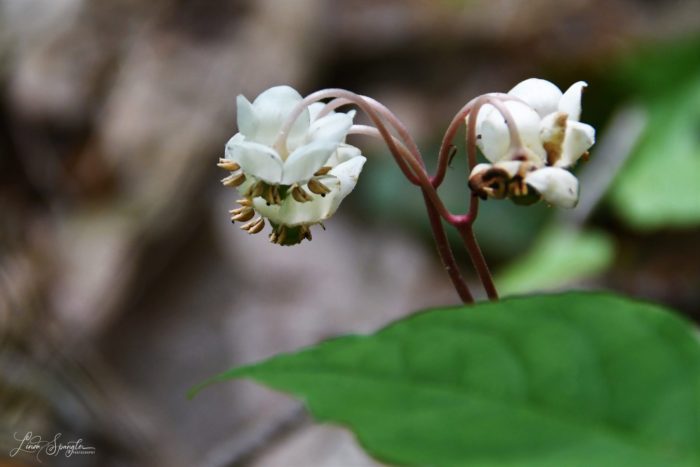Friends of the Smokies hosted the Gatlinburg Overnight Experience, June 25-26, including group hikes, a tour of the Twin Creeks Science and Education Center, and a talk by Superintendent Cassius Cash on the state of the Park.
The proceeds from the event will further the suppression of the hemlock woolly adelgid infestation in the Park. The effort uses a multi-pronged approach, including treatment of 30,000 trees and the release of 570,000 biological control beetles.

Day One was Twin Creeks Discovery Day, with an afternoon hike and a tour of the Twin Creeks Science and Education Center.
Participants had dinner at the Buckhorn Inn and heard a special presentation about the park from Superintendent Cassius Cash. Lodging was at the Buckhorn Inn.
On Day Two participants had the option of two guided hikes.
The shorter hike was the Rainbow Falls Trail (roundtrip 5.4 miles), ending at the 80-foot Rainbow Falls. Hikers had the opportunity to learn about the two-year rehabilitation of the trail, completed by the FOTS Trails Forever crew.
The longer hike was a combination of Laurel Falls, Little Greenbrier and Roundtop trails, covering 14.9 miles.
Danny Bernstein writes about the two-day event in the following guest blog post, with excerpts from her Hiker to Hiker blog. Danny was the hike leader for the long hike and is a frequent leader of FOTS Classic Hikes of the Smokies.
Photos are by hiker and photographer Linda Spangler.
by Danny Bernstein
I look forward to the Friends of the Smokies overnight trip all year.
When you sign up for the event, you get experiences that you just can’t get by yourself.
Visiting Twin Creeks Science and Education Center
This year, the first of these experiences was a tour of the Twin Creeks Science Center just off Cherokee Orchard Road on the Tennessee side of Great Smoky Mountains National Park. We arrived at the center after hiking the Twin Creeks Trail.
The Twin Creeks Science and Education Center is a 15,000 square foot facility, which opened in 2007. (Friends of the Smokies and the Great Smoky Mountains Association helped with funding for the construction of the facility.)

The building itself is a modern LEED certified masterpiece.
You can admire the building from the outside, but the hikers who signed up for this year’s overnight trip got a tour and explanation of what goes on inside.
Tom Remaley, acting Chief of Resources, greeted us and explained that Twin Creeks houses the park’s natural history collections. The Smokies is a data rich park, and data management is very important.
The center is home to the All Taxa Biodiversity Inventory (ATBI), a project which strives to document every specie in the park, native and nonnative.
In the twenty years of ATBI, over a thousand new species new to science have been found — most are insects.
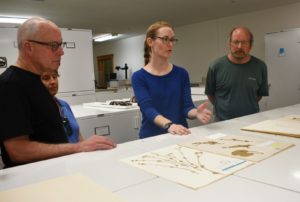
Not all species are pretty and not all can be displayed in an attractive manner. But they have to be collected, recorded and kept for further research and education.
Twin Creeks Science Center hosts every type of scientist from school groups with the Parks as Classrooms program to international researchers.
Miranda Zwingelberg gave us the tour of the facility. She is a GSMNP Natural History Technician Intern on a two-year assignment at Twin Creeks.
With a BS in Biology and a certificate in Museum Studies, she is the perfect person to acquire, inventory, catalogue, and rehouse natural history specimens.
We enter a room that looks, well, like a laundromat – full of large white cabinets. This is where the species are housed, all 90,000 specimens.
For plants, the catalog information includes exactly where it was found: longitude, latitude, trail name along with other plants around it. Three Lycopodium clavatum plants are the oldest in the collection, dating back from 1891.
“Insects are the most diverse,” Zwingelberg says. “And within insects, beetles are the largest group.”
Tim Chandler, FOTS executive director, wants to see a hemlock wooly adelgid. Zwingelberg passes him a small vial filled with liquid. I look on with him and can’t see anything but water with some black dots.
The dots are the adelgid. It turns out that the body of an adelgid is 0.8mm long, a small thing for an insect that causes so much trouble.
And in Twin Creeks Science Center’s attempt to have at least one of every species, where do they keep the elk?
Meeting with Superintendent Cassius Cash
The FOTS Overnight Experience was more than hiking and science. It included a talk and Q and A with Superintendent Cassius Cash.

Wearing jeans and a casual shirt, Cash, as he likes to be called, was energetic, knowledgeable, and candid.
We all gathered around before dinner in the lower level of the Buckhorn Inn.
Cash, who has been superintendent in the Smokies for almost five years, praised what he called the three-legged stool of Smokies supporters — Friends of the Smokies, Great Smoky Mountains Association and the Smokies volunteers — for providing what government appropriations don’t cover. And that’s a lot.
“We have 2,800 committed volunteers, which translates to $2.5 million in volunteer wages,” Cash said.
Cash thanked FOTS for raising money for the final stages of a comprehensive upgrade of Great Smoky Mountains National Park’s radio communications system — a crucial component of the day-to-day protection of visitors, natural resources and first responders.
Each radio costs $7,000. We’re not talking amateur walkie-talkies here.
If trends continue, the Smokies will have 13 million visitors in 2020. The NPS budget is about two billion dollars for 418 national park units. Not surprisingly, that is less that was requested by the National Park Service.
The Smokies gets about $19 million from the Federal Government, most of which goes for personnel. Last year, the Smokies had over 11 million visitors. That’s less than $1.75 per visitor.
“We protect what we value,” Cash said. “I want to bring more young people and unrepresented groups to the park.”
Cash encouraged Friends of the Smokies to branch out beyond North Carolina and Tennessee and find supporters in other states. The Smokies gets many visitors from Ohio and Florida, for example.
Tim Chandler, Executive Director of FOTS, assured the audience that work is already underway to reach out to these visitors, many who have second homes in the Smokies area.
I really enjoyed this exciting and educational meeting with Cash, one of the perks of the Smokies overnight trip.
Hiking from Laurel Falls to Townsend “Y”
In describing the hike I was leading on the second day of the event, I had no problem labeling the hike as “strenuous.”
We would be hiking the Laurel Falls, Little Greenbrier and Roundtop trails, covering 14.9 miles.
We drove to the Townsend “Y” and parked. FOTS had organized a bus shuttle with Great Smoky Mountains Association to take us to Laurel Falls, the start of the hike. What a luxury!
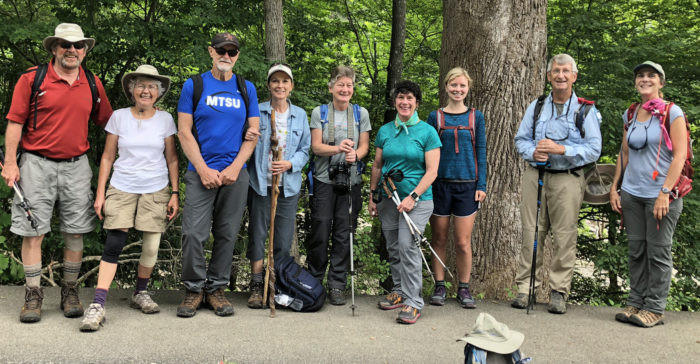
Laurel Falls Trail to the falls must be one of the most used trails in the park. The trail is paved for 1.5 miles to the falls. By the time we got on the trail, the crowd was rolling.
Once we passed the falls and regrouped, the crowds disappeared. We passed only two hikers as we climbed up the steep trail.
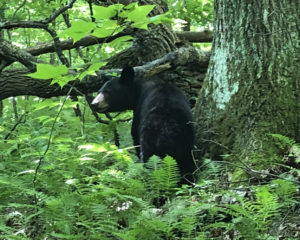
As we got almost to the junction with Little Greenbrier Trail, Marielle DeJong (FOTS North Carolina Communications & Operations Coordinator) said, “Don’t miss the bear.”
I may never have been so close to a bear.
We pegged him as a yearling, a juvenile.
He wasn’t going anywhere, and I stood back and took a couple of pictures. Not a bad picture, actually. Now I was glad that the Laurel Falls crowds were way below us.
We turned left on Little Greenbrier Trail, mostly downhill, thank goodness. We were now close to a park boundary. The trees were fully leafed out, but we could make out a house or two on our right side. Lots of signs stated that there was to be no hunting on their private land.
When we reached Wears Cove Gap Road at about 2 p.m., we were all hot and sticky, with 7.5 miles to go. For most people, that’s a hike in itself. We crossed the road and started on the Roundtop Trail, one of the least used trails in the park. This trail is also at the boundary of the park.
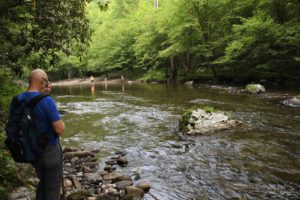
By now, my mind had stopped working but my legs were still moving.
The trail finally started its serious descent, and we saw the Little River that we had to cross.
I emptied pockets of everything, including my phone.
We all left our boots on – that was understood from the beginning. Too many rocks, too slippery and too dangerous to wade across Little River barefoot.
The cool water felt wonderful. The water was about knee deep on me. Plenty of visitors were swimming in deeper water. Others were tubing.
We reached the other side of the river where our cars were waiting. It was 6 p.m., and we started our long drive home.
***
The Classic Hikes of the Smokies are the second Tuesday of the month through December. Each Classic Hike is $20 for FOTS members and $35 for new and renewing members, which includes a one-year membership.
The Classic Hikes of the Smokies series is a fundraiser for Trails Forever, a partnership between Friends of the Smokies and the National Park Service.
Trails Forever funds a full-time trail crew to reconstruct and rehabilitate some of the park’s most impacted trails. In November 2018, the crew completed the two-year restoration of Rainbow Falls Trail and now is restoring Trillium Gap Trail.
The special two-day events are held once a year. Previous two-day events have been held at Cades Cove, Mt. Le Conte and the Fontana Lake area.
